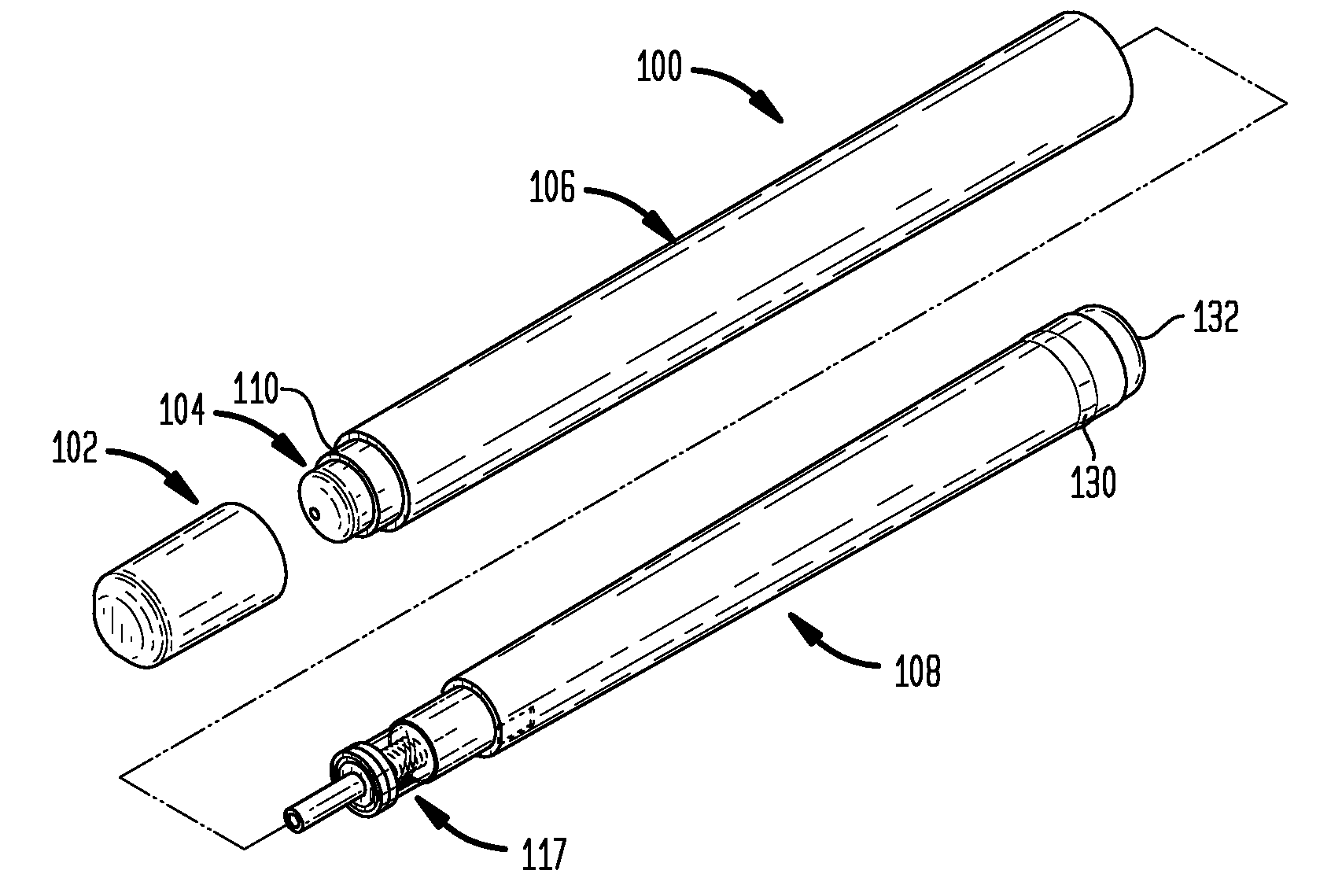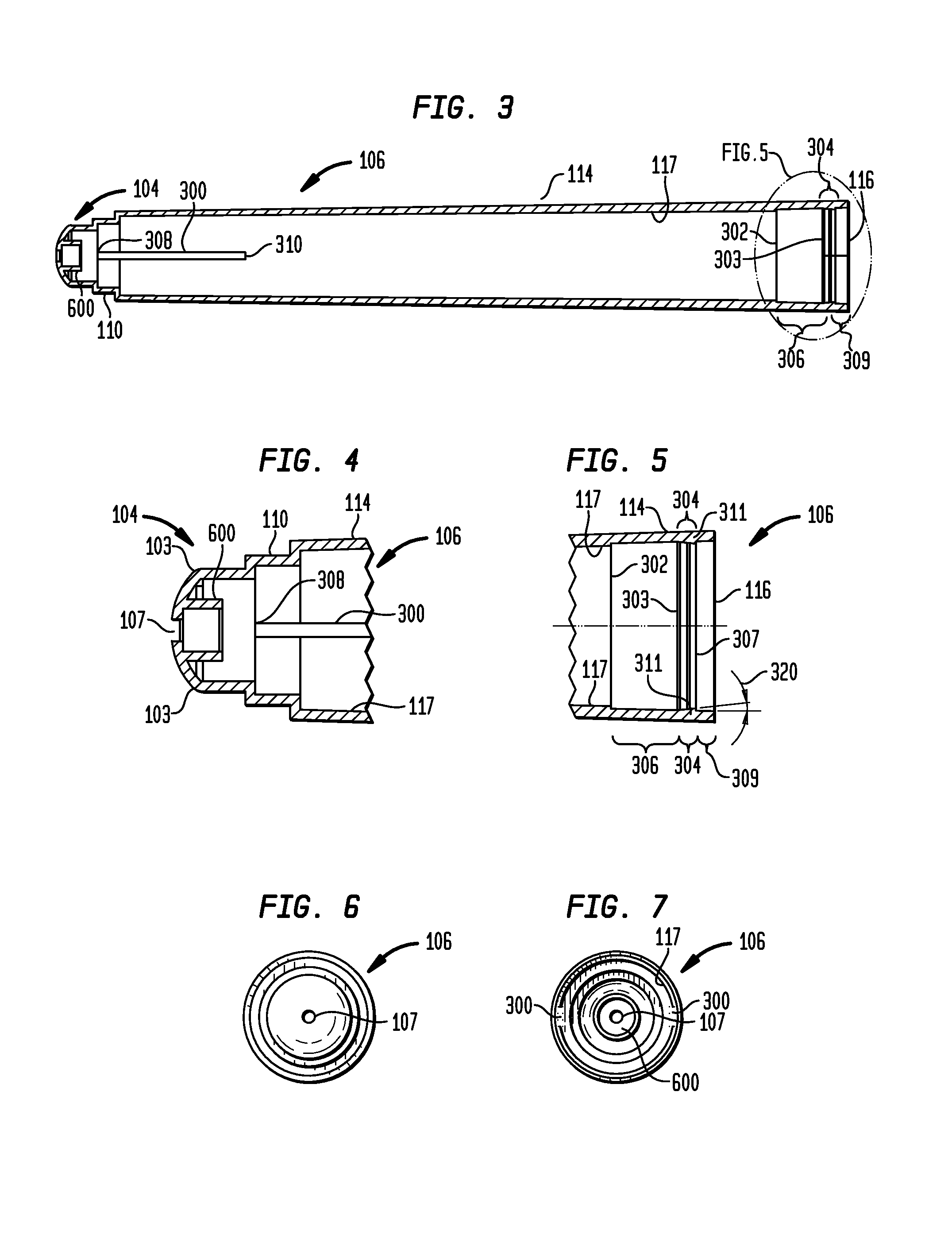Fluid dispenser assembly
a dispenser and assembly technology, applied in the field of fluid dispensers, can solve the problems of affecting the quality of the product, and difficult assembly, and achieve the effects of convenient compatibility, low manufacturing cost, and low manufacturing cos
- Summary
- Abstract
- Description
- Claims
- Application Information
AI Technical Summary
Benefits of technology
Problems solved by technology
Method used
Image
Examples
Embodiment Construction
[0044]In describing the preferred embodiments of the subject matter illustrated and to be described with respect to the drawings, specific terminology will be resorted to for the sake of clarity. However, the invention is not intended to be limited to the specific terms so selected and it is to be understood that each specific term includes all technical equivalents which operate in a similar manner to accomplish a similar purpose.
[0045]The present invention is generally directed to a dispenser assembly 100 shown in FIG. 1 for dispensing predetermined amounts of fluid materials. The material, such as lotion, is stored within a fluid insert 108 and dispensed therefrom in response to pressure applied by a user onto the fluid insert 108, which, in turn, actuates the pump 117. The dispenser also contains an outer casing 106 that holds the fluid insert 108.
[0046]It is to be understood that the dispenser for fluid materials of the present invention may be utilized to dispense various liqu...
PUM
 Login to View More
Login to View More Abstract
Description
Claims
Application Information
 Login to View More
Login to View More - R&D
- Intellectual Property
- Life Sciences
- Materials
- Tech Scout
- Unparalleled Data Quality
- Higher Quality Content
- 60% Fewer Hallucinations
Browse by: Latest US Patents, China's latest patents, Technical Efficacy Thesaurus, Application Domain, Technology Topic, Popular Technical Reports.
© 2025 PatSnap. All rights reserved.Legal|Privacy policy|Modern Slavery Act Transparency Statement|Sitemap|About US| Contact US: help@patsnap.com



